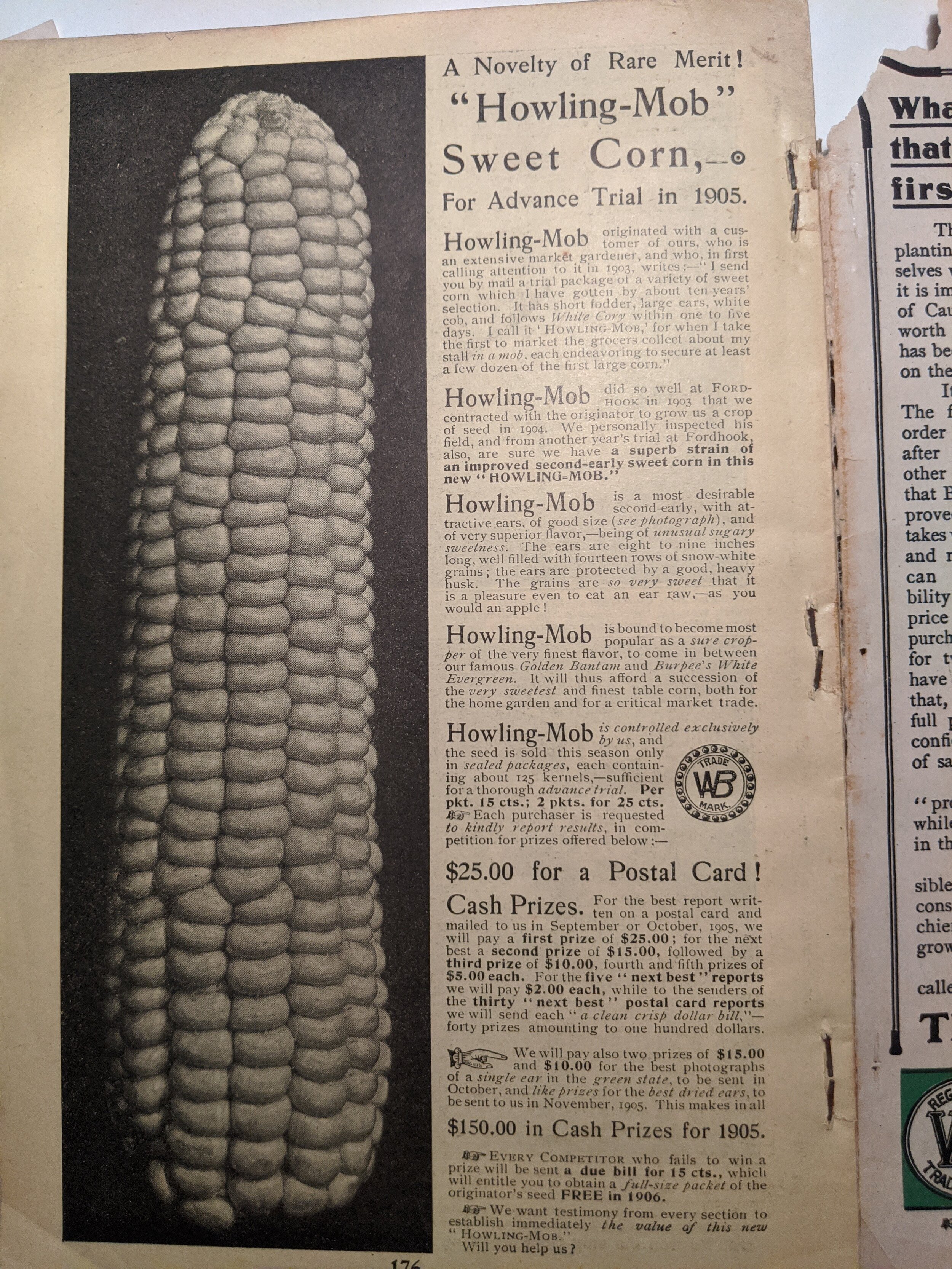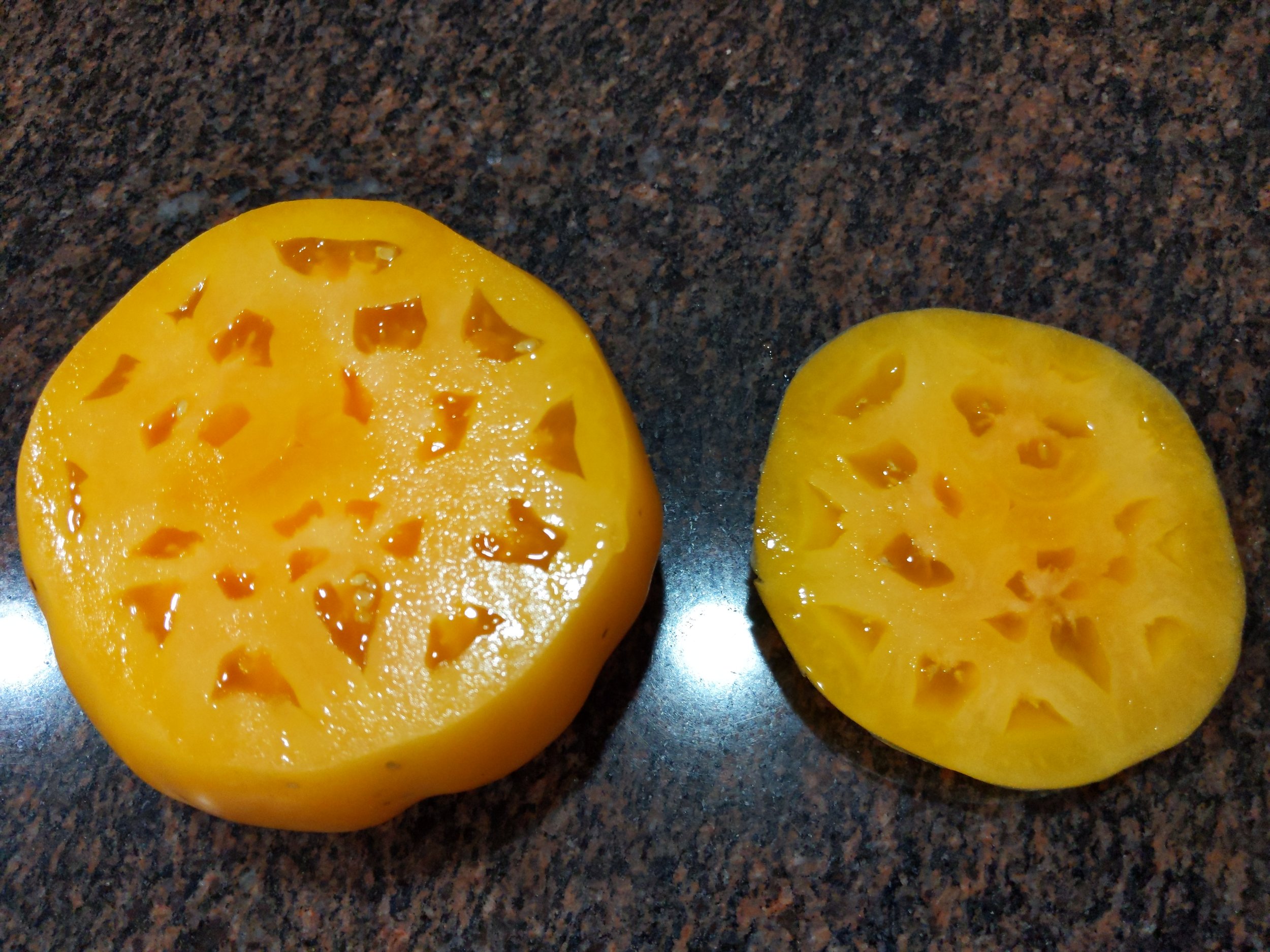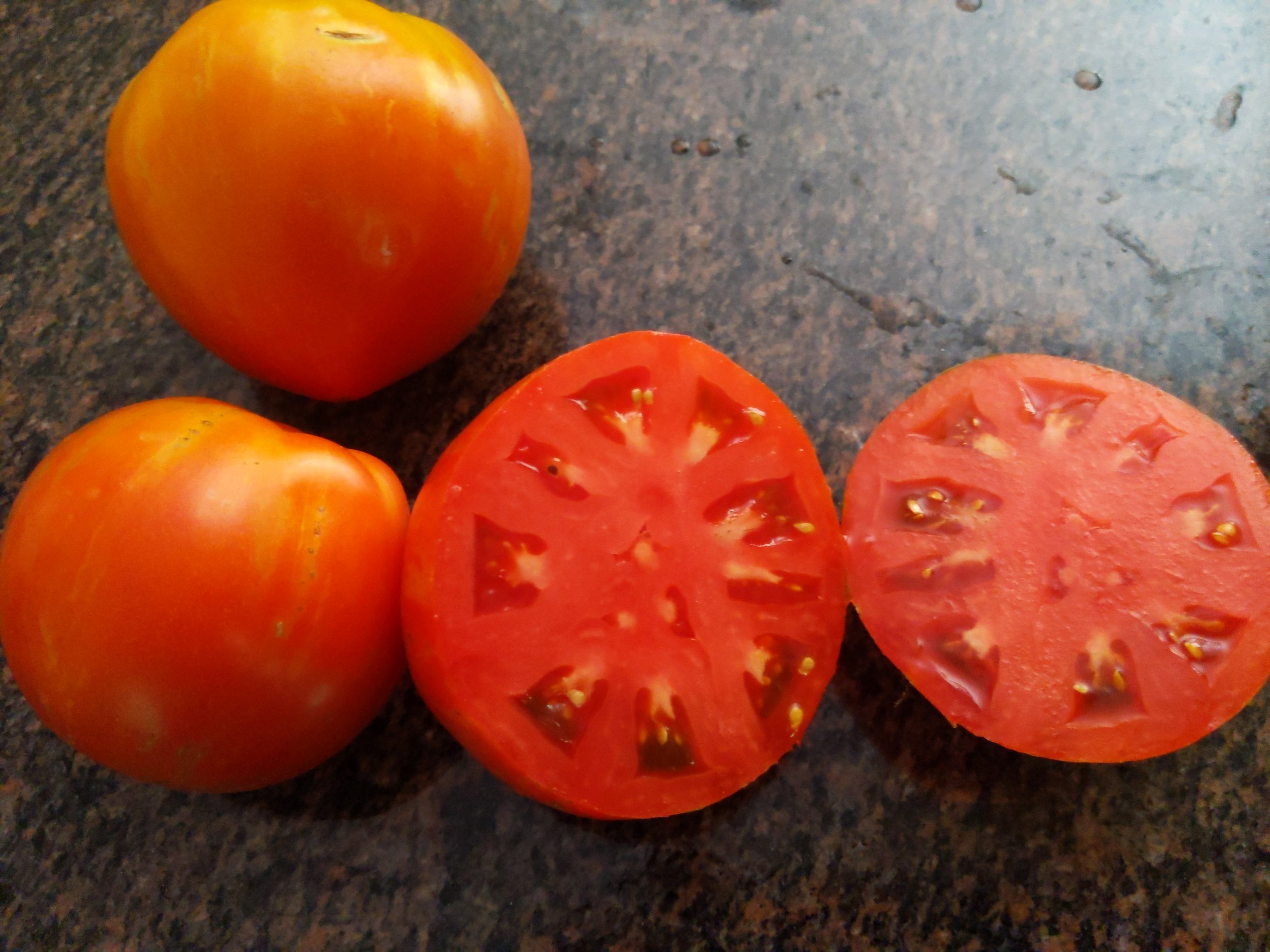In Part 1 of my Dwarf Tomato Project review series, I tackled my impressions of our first 17 releases. Below are reviews of the next batch - a total of 19 varieties. Enjoy! (as a reminder, my very favorites are marked with an “*” after the name. It is important to keep in mind that these are my favorites - those that excel in my growing area, using my techniques, and assessed by my taste buds. Your impressions and experiences may be very different!).
Rosella Crimson * - I don’t grow it enough, it can struggle with disease issues, getting it uniformly stable wasn’t easy…but when it is at its best in a good season, the flavor of this medium large, productive release can approach Brandywine in intensity and quality. It just isn’t the most reliable performer, season to season, but when it’s on, it’s REALLY on!
Chocolate Champion - This selection has been lost in the sauce in my garden. The years I worked on it were quite successful, and to me it has better flavor potential than the similarly colored and sized Tasmanian Chocolate. It can be sensitive to foliage disease, and I clearly need to return to it soon to update and confirm my impressions.
Big Green Dwarf - I feel the same way about Big Green Dwarf as I do about Chocolate Champion - I’ve had some fine experiences with it but my memory is a bit hazy. It is one of our few yellow skinned green when ripe varieties, quite productive, yet also a bit vulnerable to foliage diseases on some seasons. So, this is another that needs a fresh look by me.
Wherokowhai *- Challenging to spell and pronounce but a fine addition to any garden, I don’t have to ponder long to put this on my favorites list. Those who love the indeterminate Lucky Cross should similarly crave this “dwarf version”. I’ve had few issues with productivity, health and most important, taste. It is time for me to grace my garden once more with this fine variety, one of our best.
Dwarf Blazing Beauty * - I did indeed return to it this year, and am happy that I did, because it is one of the very best flavored of all of our releases, particularly for those that like intensity and a bit of tartness. The rich orange color also makes it a relative rarity among our releases. It can, like many of our potato leaf selections, be a fit fussy about fruit set or foliage disease, but is well worth growing despite any challenges it presents for its flavor alone.
Boronia - I’ve had average tasting and superb tasting Boronia plants in my garden. Sharing the purple color with Dwarf Wild Fred and Rosella Purple, it tends a bit smaller, bears a bit more heavily and in a more concentrated manner, in my experiences. The internal structure is unique for this variety among the purples as well, with a very meaty center. Foliage disease can be a bit of an issue in really humid seasons. I don’t include it with the very best, but it is a very good tomato, and judging from some reviews on seed sales websites, there are those who love it.
Sean's Yellow Dwarf * - I always tend to underrate this one a bit - but it is pretty, really nice sized, super prolific, and the flavor sneaks up on me - it is very, very good, approaching excellent. This is actually a great variety to use to introduce people to the potential and characteristics of our dwarf varieties due to its reliability season to season. In fact, now that I’ve written this assessment, I’ve awarded it a late * and it is now in my favorites category.
Sweet Adelaide - Oh, this one is a bit of a mystery and conundrum. I’ve had spectacularly flavored ones, I’ve had somewhat bland ones, I’ve healthy productive plants and quickly diseased nearly total failures. Will the real Sweet Adelaide please stand up? It could be that this is one of our releases that is very susceptible to differing conditions. I will return to it every so often and hope that it provides the best of what it is capable of! I’d love to hear from others who have experiences with it.
Dwarf Pink Passion -This is simply a lovely, productive, quite early release from our project that is a step removed from having a flavor that matches its other attributes, in my experiences with it. Still, it just may be that the best use for the variety is in sauces, roasting, pastes, and other forms of processing, rather than sliced and on sandwiches, or eaten alone. I like it very much.
Chocolate Lightning * - I just noticed that this one slipped off the list in my first post of this blog - so it is edited, and this important variety is now inserted where it belongs. I LOVE this variety, although it can be as finicky as some of our other temperamental offerings. The plant can be on the tall side (still a dwarf, but pretty stretched), the fruit hard to find in the dense foliage, set fruit late and be a shy yielder - some years are prolific, others less so. But the color, and the flavor, are outstanding and unique. It can also shift colors a bit, as I suspect that like others in the Beauty family the genetics are pretty complex and we probably didn’t stabilize this as much as we might have. The color should be a definite chocolate (not purple), with lots of vertical golden or greenish stripes. It is a “black” tomato, with dark crimson flesh and an intense, well balanced flavor.
Uluru Ochre * - When Patrina “discovered” this tomato, it was unique in the color possibilities - a “black orange” variety, matched by productivity and flavor, fortunately. As Cherokee Purple was a stretch for people when released back in 1993 (“you expect me to eat a tomato THAT color?”), this is a similar reach for traditional tomato color preferences. It really never disappoints, and it in the top tier of our work.
Sweet Scarlet Dwarf * - Of all of the traditional red colored tomatoes in our project, this stands out - in fact, of all of our releases, not matter what the color, it really does fit in with the very best. My only quibble is that it can be variable season to season, garden to garden, with respect to fruit set/yield, as well as susceptibility to disease. It is a clear favorite of mine, with an intense, complex, rich flavor that delivers a delightful tart kick.
Fred's Tie Dye - I love the color, and really, really like the flavor. In fact, in some seasons, it stands with the best..in others, falls a tad flat - or at least that’s what I recall. It’s been a few years since I’ve grown it and it is time for it to return to my garden. I have a sneaky feeling that I’ve underrated it, as it emerged when interesting leads were popping out left and right.
Dwarf Purple Heart - Size, shape, color and productivity are not at all in question - this is a vigorous plant, the large heart shaped purple fruits are really impressive, and the flavor is, if not superb, very very good. My main issue is that disease can hit it hard in some seasons, in my garden. Yet - I know from reading reviews and from feedback directly to me that there are those who love it - which is gratifying. There is no way that all 106 of our releases will excite and excel for everyone, everywhere. One of the missing pieces of our project is just that - which varieties do best when grown….where???
Banksia Queen - This one clearly fits in my personal category of underappreciated/underrated, and undergrown. Also popping out during a very busy phase for our project, the few times I’ve grown it were not as memorable as I would like. Being a regular leaf release from the Tipsy family makes it quite unique. It is good sized, oblate, a pretty yellow, but I’ve noted it to be prone to catfacing and other irregular shapes. The flavor is fine, the fruit set can be unpredictable, and disease for me has been a bit of an issue. So let’s call this another to return to soon for a fresh look.
Summer Sweet Gold * - This is essentially my reselection from the very best of our Summertime Gold selections, and I aimed for smooth oblate form, a nice medium yellow color with a faint blush, and superb flavor. It may indeed be identical to some seed lots of Summertime Gold, but so many of those were looking too much like Dwarf Mr Snow, hence my effort to improve our work (hopefully). It is certainly a wonderful tomato, one of the best of our releases.
Dwarf Golden Heart - I feel the same about this as I do Dwarf Pink Passion…it is attractive, early and prolific, and just misses inclusion into the top selections because of a lack of flavor intensity and interest to my palate. It also doesn’t always show as distinct a heart shaped form, so could be a candidate for reselection work. For those who want volume for sauce and canning, it is a great choice.
Bundaberg Rumball - We had this one identified and named very early on, but due to its smaller size, took a bit of time to be “finished”. For those looking for a super productive saladette tomato type in an interesting chocolate color with very good flavor, this is your tomato. I like them skewered and grilled best.
Sarandipity - Poor Sara (my daughter) - I went and named a tomato for her based on its visual interest, but she bemoans the fact that it just isn’t in the top tier for flavor. I agree, but that doesn’t make it one to ignore. It is lovely, shaped perfectly for skewering and grilling, canning or salads, and is actually very tasty - just not up there with the best. It seems to have good disease tolerance, yields very well, and comes on early. It is actually very well worth growing!







































